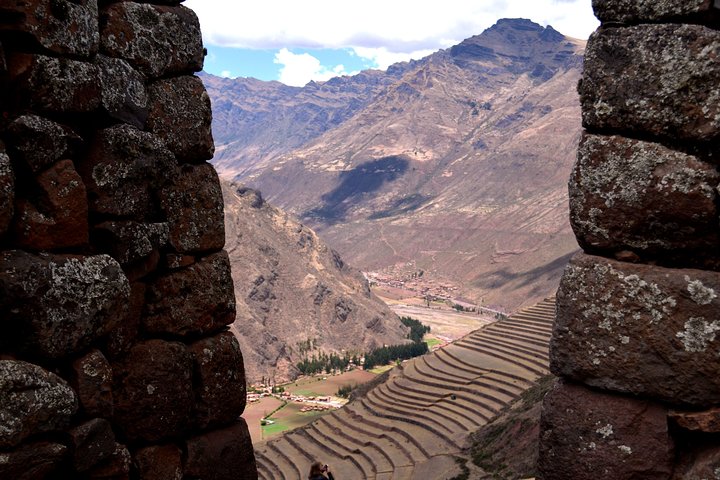
Sacred Valley of the Incas in Private: Pisaq, Ollantaytambo, Chinchero, Awanacancha
· For those who prefer to enjoy their privacy and relaxation in the sacred valley. · We visit the reserve of South American camelids, where you can have an experience different from the others with our Andean animals. · We work with the best schedule to visit the sacred valley of the Incas peacefully. Making your experience unique. · We work in private services to have more time of visit and comfort. · Our guides are accredited professionals, specialists in Nature and Culture for this route. · Our transports with all the certification, are private, modern and comfortable to make your trip pleasant.
Options
Sacred Valley of the Incas in Private: Pisaq, Ollantaytambo, Chinchero, Awanacancha
Pickup included
What's included in Sacred Valley of the Incas in Private: Pisaq, Ollantaytambo, Chinchero, Awanacancha
(Subject to Option Inclusions)Itinerary
Awana Kancha
We will visit the South American Camel Reserve, where we can see llamas, alpacas and vicuñas in their natural state.
Parque Arqueologico Pisac
The Pisaq Archaeological Park (or Pisac) is a group of Inca buildings (a fortified city) that is located in the district of Pisaq, in the province of Calca, in the department and region of Cusco. At an altitude of 2 972 meters above sea level, and settled on a mountain near the town of Pisaq. It is believed that its strategic location provided greater security to the building in addition to being in a control area. The place also protected him, by height, from possible attacks by the Anti people, with whom they were in constant enmity. It is said that the architectural ensemble that forms Pisac would have been built during the tenth and eleventh centuries of our era, in the period of the Inca expansion and would have had urban and religious purposes. The name of Pisac or Pisac, does not have a definite translation, although there are people who believe that it could be derived from the Quechua word pisaqa, in relation to a bird, whose form would also have tried to be represented in the design of the territory. At the architectural level, in Pisac we can observe, that in the same way that the majority of the Inca constructions is built with stone carved, in such a way that the angles of them fit perfectly one on another making unnecessary the use of some type of mortar for the union of the same.
Archaeological Park Ollantaytambo
It was an Inca town. Preserves in time: houses, streets and canals as in the time of Tahuantinsuyo. The name of the town and the archaeological zone is due to the cacique Ollanta, who, according to the oral tradition, fell in love with a princess daughter of the Inca Pachacútec and was severely punished. In the set of Ollantaytambo, located on the hill overlooking the town, buildings such as the Temple of the Sun and its gigantic monoliths stand out: the Mañaracay or Royal Hall, the Incahuatana and the Princess Baths. In the upper part stands a fortress, with a series of terraces of carved stone, built to protect the valley from the possible invasions of ethnic groups that came from the jungles. One of the best preserved areas extends to the north of Hanan Huacaypata Square: a total of 15 blocks of mansions built on carved stone walls.
Inclusions
- First aid kit.
- Permanent assistances and respective transfers.
- Entrance tickets to the reserve of South American camelids
- Private Tourist Transport
- Lunch, buffet in the best restaurant in the Sacred Valley
- Pick up at your hotel.
- Professional guide in required language.
- Entrance tickets to Pisaq, Ollantaytambo and Chinchero
- Tourist visit to the reserve of camelids, Pisaq, Ollantaytambo, Chinchero
- Oxygen balloon
- Tips, incentive to staff
- Suitable for all physical fitness levels
Meet
Pickup and Dropoff
Choose to be picked up from a list of locations
Please arrive at the pick up point 10 minutes before departure time.
Additional Information
We pick up all travelers from their hotels located within the historic center of the city of Cusco at a scheduled time. Which will be left a day earlier in the reception of your hotel.






